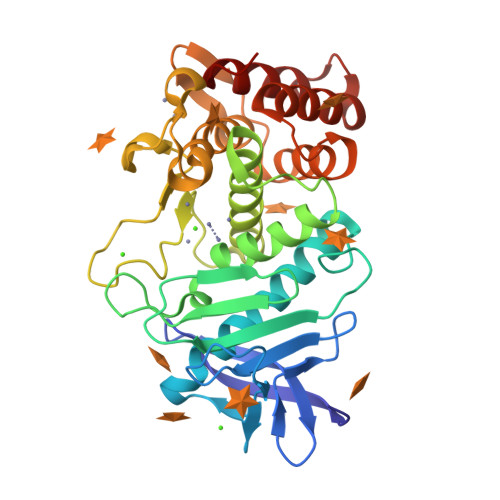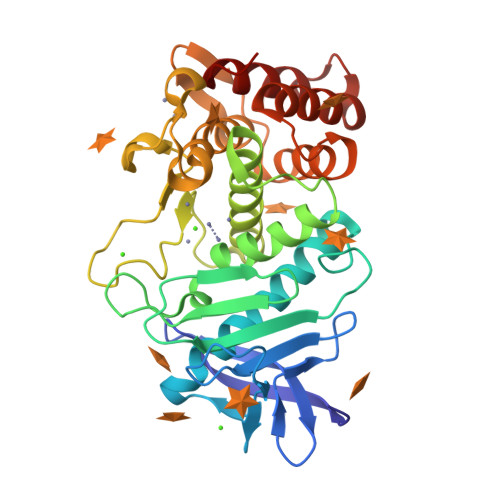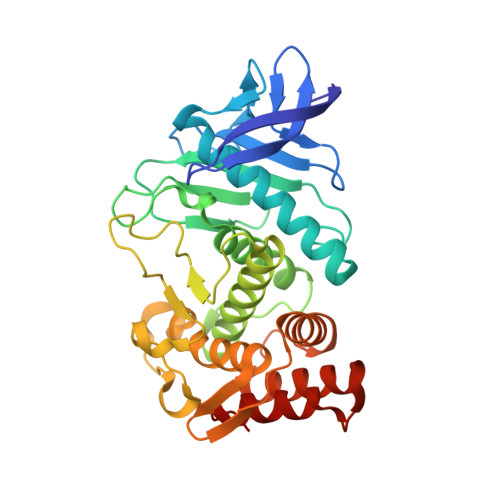A comparison of gas stream cooling and plunge cooling of macromolecular crystals.
Harrison, K., Wu, Z., Juers, D.H.(2019) J Appl Crystallogr 52: 1222-1232
- PubMed: 31636524
- DOI: https://doi.org/10.1107/S1600576719010318
- Primary Citation of Related Structures:
6N4W, 6N4Z - PubMed Abstract:
Cryocooling for macromolecular crystallography is usually performed via plunging the crystal into a liquid cryogen or placing the crystal in a cold gas stream. These two approaches are compared here for the case of nitro-gen cooling. The results show that gas stream cooling, which typically cools the crystal more slowly, yields lower mosaicity and, in some cases, a stronger anomalous signal relative to rapid plunge cooling. During plunging, moving the crystal slowly through the cold gas layer above the liquid surface can produce mosaicity similar to gas stream cooling. Annealing plunge cooled crystals by warming and recooling in the gas stream allows the mosaicity and anomalous signal to recover. For tetragonal thermolysin, the observed effects are less pronounced when the cryosolvent has smaller thermal contraction, under which conditions the protein structures from plunge cooled and gas stream cooled crystals are very similar. Finally, this work also demonstrates that the resolution dependence of the reflecting range is correlated with the cooling method, suggesting it may be a useful tool for discerning whether crystals are cooled too rapidly. The results support previous studies suggesting that slower cooling methods are less deleterious to crystal order, as long as ice formation is prevented and dehydration is limited.
Organizational Affiliation:
Department of Physics and Program in Biochemistry, Biophysics and Molecular Biology, Whitman College, 345 Boyer Avenue, Walla Walla, WA 99362, USA.





















